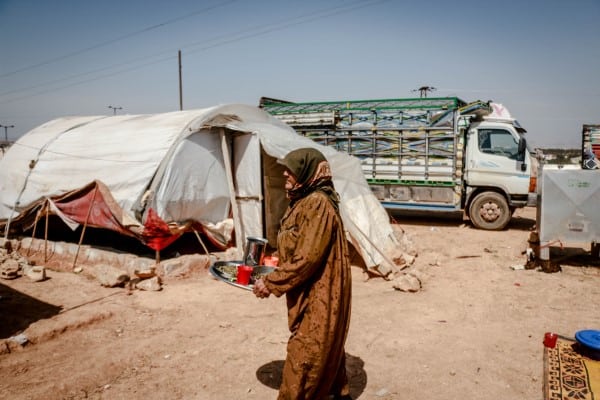Foreign aid is the transfer of goods, finances or services from richer countries for the benefit of people in developing ones. It can be in the form of humanitarian assistance, government loans or military aid. Every year, billions of dollars is spent on overseas aid, but where does it come from? What are the sources of foreign aid that allow developed countries to provide so much assistance?
Below we breakdown the six main sources of foreign aid, exploring the differences in their origins and how foreign aid from different sources is used…
National Governments
National governments are one of the largest sources of foreign aid. Governments of many richer countries allocate a set percentage of their income to be used for overseas aid. The money governments use for foreign aid is taken from tax revenue they raise.
As a source of foreign aid, national governments are some of the most important institutions in the aid sector. Billions of dollars a year in aid funding originates with national governments.
Foreign aid that comes from governments is used in different ways. Bilateral aid is when national governments provide aid directly to the governments of developing countries. Another source of foreign aid that comes from national governments is allocated through their donor agencies.
Most countries in the developing world have a government department that provides funds to non-government organisations (NGO) and UN agencies. Examples of foreign aid departments include:
- UK Foreign Commonwealth and Development Office
- US Aid
- Global Affairs Canada
- Swedish International Development Agency
- German Federal Foreign Office
- French Crisis Centre
These departments act as the original source for the aid funding, as well as monitor aid projects and provide technical guidance as required. Governments aid departments are also responsible for developing strategies that align the aid funding given by the government with its international priorities.
Intergovernmental Organisations
A major source of foreign aid is intergovernmental organisations.
Intergovernmental organisations are trans-national bodies made up of sovereign states. They are formed by treaties between nations. They often aim to pool resources from many countries, create standards and regulations for member states and coordinate diplomacy on behalf of countries within the organisation.
Many intergovernmental organisations provide foreign aid as a key part of their mandate. They source the funds for their aid donations from the levy placed on member states. To fund foreign aid, intergovernmental organisations pool money provided by members and coordinate a single aid policy on behalf of them all.
The scale of foreign aid funds intergovernmental organisations can provide is a major reason why they are an important source of foreign aid.
Examples of some intergovernmental organisations that are sources of foreign aid are:
- European Union
- African Union
- ASEAN
- Union of South American Nations
Intergovernmental organisations provide foreign assistance directly to national governments in developing countries. They also provide funds to international organisations such as the United Nations, and NGOs. Many UN agencies and large international organisations source large parts of their funding from intergovernmental organisations.
International Organisations
Another source of foreign aid is international organisations.
International organisations are global bodies that work around the world. Organisations such as these are often made up of member states and are funded by levies paid by their governments.
Examples of international organisations include:
- United Nations Agencies
- World Bank
- International Monetary Fund
- World Trade Organisation
- World Economic Forum
International organisations are a major source of foreign aid. Many provide assistance to people in need around the world as a core part of their mandate. There are many international organisations that specialise in a specific aspects of foreign aid, and act as a source for funding and resources for these specific areas.
Like intergovernmental organisations and national governments, international organisations that act as a source for foreign aid often divide their donations between funds given directly to developing country governments, and those given to NGOs. Many large international NGOs receive significant funding from international organisations such as the United Nations.
In order to act as a source for foreign aid, international organisations must raise funds. Most do these through a combination of funding provided by national governments, and direct donations from the public. Donations from private companies can also be key for international organisations raising funds to use for foreign aid.
Private Companies
Many private companies are actually a source of foreign aid.
Large private businesses often donate an amount of their profits to charity. Many support international organisations such as NGOs or UN agencies and give money to them. This is a direct source of foreign aid as these organisations use the money they receive from companies to assist people around the world – often those affected by poverty, conflicts or disasters.
Lots of famous companies have charitable bodies or foundations that coordinate their donations to charities.
Private businesses act as a source of foreign aid by providing funding for overseas aid work. They raise funds through their business practices, and this allows them a way to provide foreign aid.
Many private businesses that act as a source of foreign aid have long-standing relationships with NGOs they feel align with their values. Being a source of foreign aid can also help the company’s image and promote a view that the company benefits people around the world.
Examples of some private businesses that are sources of foreign aid include:
- Unilever
- GlaxoSmithKline
- Arsenal Football Club
- Deloitte
- Visa
As well as large and well-known companies acting as sources of foreign aid, many small and medium size businesses support charities and NGOs. By doing this they are also a source of foreign aid funding.
Public Donations
Donations from the public are a key source of foreign aid.
In the context of foreign aid, public donations are when individuals give money to organisations that do overseas aid work. Many NGOs raise funds from the public. They do this by running campaigns, adverts, events, or having shops that sell donated goods. NGOs use this money to fund their foreign aid work. Public donations are a vital source of foreign aid funding for many charitable organisations.
Many people sign-up to charities that they wish to support and donate a set amount of money each month. This is usually a small amount. However, NGOs can source funds from large numbers of people by asking for small monthly donations. They can provide a significant revenue stream to fund their overseas aid work.
When major crises occur, NGOs will run campaigns to source funds from the public. In some countries there are organisations that manage these campaigns and pool funds between member NGOs. This reduces competition and improves the coordination of fund-raising campaigns. Organisations such as the Disaster Emergency Committee (DEC) in the UK and Alliance Urgences in France are examples of this.
Public donations are a hugely important source of foreign aid. Many government donors tie their funding to public donations – meaning NGOs must raise a set amount through public donations in order for the government donor to match it. This is a way for government donors to ensure there is public support for a project before they act as source of funding for it.
Philanthropic Foundations
Philanthropic organisations are another source of foreign aid.
As a source of foreign aid, philanthropic foundations aim to raise funds to provide to NGOs and charities. Their main objective it to act as a body for fundraising, as opposed to directly running projects. This makes philanthropic foundations a major source of foreign aid.
Examples of some of the most important philanthropic foundations that are sources of foreign aid are:
- Bill and Malinda Gates Foundation
- Wellcome Trust
- Novo Nordisk Foundation
- Stichting INGKA Foundation
- Open Society Foundation
Many philanthropic foundations raise funds for a particular cause. There are many focused on international development issues and assisting people around the world living in poverty or affected by crises. These philanthropic foundations are major source of foreign aid.
As well as philanthropic foundations that support NGOs doing international aid work, there are also foundations that do research into global issues.
Many advancements, especially in the areas of medicines, climate change, and agriculture, have come about because of funding from philanthropic foundations. This is another way that they act as a source of foreign aid – much of this research would not be funded by other donors but it has had an enormous impact on people living in developing countries.




